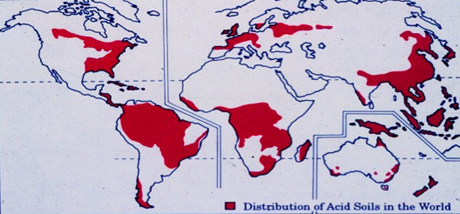Cornell research helps meet world's crop challenges
By Krishna Ramanujan

Two Cornell researchers are world experts in studies of little-known plant transport proteins that may be key to easing ever-growing global food needs.
Leon Kochian and Maria Harrison are two of the 12 plant biologists who have authored a perspectives piece in the May 2 issue of Nature. The article explores how newly discovered plant transport proteins have the potential to help expand global agriculture to better address the challenges of feeding billions of underfed people.
Plant transport proteins carry mineral nutrients and key molecules across cell membranes, which are key targets for developing plants that take up nutrients, transport sugar and are tolerant to salt and aluminum.
For example, Kochian, Cornell adjunct professor of plant biology and director of the U.S. Department of Agriculture’s Robert W. Holley Center for Agriculture and Health at Cornell, has identified a transport protein gene that may be responsible for making such crops as sorghum tolerant to aluminum toxicity in soils, which makes 50 percent of the world’s arable lands unusable for agriculture.
“It’s a big problem,” said Kochian, of aluminum toxicity that stems from acidic soils. “Aluminum is the most abundant metal in the Earth’s crust, but in acidic soils, it gets dissolved as aluminum ions that are very toxic to roots,” he said.
The plant’s roots grow from the tip, and it is this part that needs protection from aluminum ions. Kochian and colleagues have identified a transporter in the plasma membrane of root cells that transports citric acid out of the roots where it binds with aluminum ions in the soil and renders them nontoxic to the plants.
The gene that Kochian and colleagues have discovered appears to control transport of organic compounds, such as citric acid, out of the cell.
“We have funding from international agencies to identify molecular markers for the best alleles [versions] of our aluminum tolerance genes,” said Kochian. By identifying the markers that are in or very close to an aluminum tolerance gene, plant breeders will use molecular breeding techniques to identify whether a breeding line contains the desired gene; this would greatly accelerate the process of breeding new varieties.
Similarly, Maria Harrison, the William H. Crocker Professor at the Boyce Thompson Institute for Plant Research on Cornell’s Ithaca campus, has discovered transporters in plants that enable them acquire phosphorus, a nutrient vital for plant growth and yield. Lack of phosphorus in forms accessible to plants limits crop production on close to 70 percent of the world’s agricultural soils. As a result, farmers add fertilizers produced with nonrenewable rock phosphate, reserves of which will be depleted within perhaps 70 years.
While researchers have shown that transporters allow plants to acquire phosphorous from soil directly, Harrison has also studied transporters that work during a symbiotic relationship between plants and soil fungi, called mycorrhizae. Fungi living in symbiotic compartments in roots capture phosphate from the soil and make these ions accessible for plant phosphate transporters to deliver into root cells. Harrison’s work will help breeders develop plants that can acquire phosphate more efficiently from the soil.
Lead author Julian Schroeder, professor of biology at University of California-San Diego, believes these discoveries require more attention and funding to meet the world’s future food challenges.
Media Contact
Get Cornell news delivered right to your inbox.
Subscribe